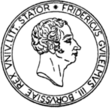In its second exhibition from 15th February to 12th May 2000, the Arithmeum presented the concrete artist Horst Bartnig. It covered the whole of his artistic career and comprised more than 120 works of art – paintings and sculptures.
In more senses than one, Bartnig, who was born in 1936 in Silesia, is a loner. His particular art form was not very popular in the former GDR and, moreover, there was no room for concrete artists alongside the grand master of East German concrete art, Hermann Gloeckner. During his studies at the College of Applied Arts in Magdeburg he also studied Nature intensively, and after finishing, he questioned not only the role of Nature as a source of inspiration, but also art itself. In 1964 he began his painting career in concrete art, which enabled him to „get himself sorted out„.
At first sight, Bartnig’s pictures impress with their strong colours and their simple geometric structure. Only on a second viewing, one realizes that their variation is based on a complex system. What Bartnig did was to develop a set of rules of which the most important was: no picture should be obtained from another simply by rotation or reflection, and he used a computer to list all the possible variations. Initially, this procedure does not seem to give Bartnig much room for spontaneity. But it is what the computer does not do that brings his art to life. The systematic, mathematical frame-work just serves to supply the ideas. Where the computer stops, the artist Bartnig begins. Which arrangements to choose and what colours to use, is of paramount aesthetic importance to him.
Bartnig has also formed four new wooden sculptures for this exhi- bition in the Arithmeum. These large three-dimensional objects are based on a variational principle as well.






